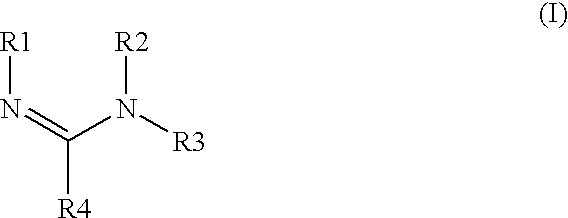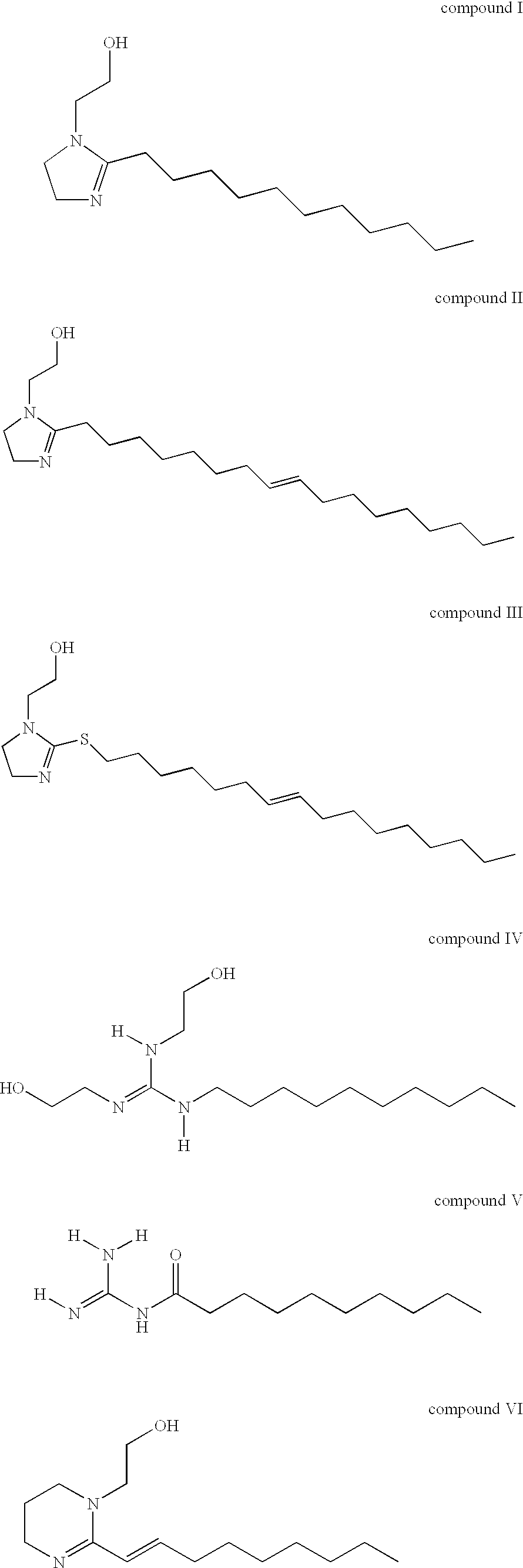Preparation of lithographic printing plate by computer-to-plate by ink jet method utilizing amidine-containing oleophilizing compound
a technology of amidine and oleophilizing compound, which is applied in the field of preparation of lithographic printing plate by ink jet printing, can solve the problems of large number of new computer-to-plate systems, complex, and cumbersome preparation of photographic intermediate film involving wet processing, and achieves the effect of simple and inexpensive method
- Summary
- Abstract
- Description
- Claims
- Application Information
AI Technical Summary
Benefits of technology
Problems solved by technology
Method used
Image
Examples
first embodiment
The jetting of the ink droplets can be performed in several different ways. In a first type of process a continuous droplet stream is created by applying a pressure wave pattern. This process is known as continuous ink jet printing. In a first embodiment the droplet stream is divided into droplets that are electrostatically charged, deflected and recollected, and into droplets that remain uncharged, continue their way undeflected, and form the image. Alternatively, the charged deflected stream forms the image and the uncharged undeflected jet is recollected. In this variant of continuous ink jet printing several jets are deflected to a different degree and thus record the image (multideflection system).
According to a second process the ink droplets can be created “on demand” (“DOD” or “drop on demand” method) whereby the printing device ejects the droplets only when they are used in imaging on a receiver thereby avoiding the complexity of drop charging, deflection hardware, and ink ...
examples
The oleophilizing capacity of representatives of the chemical substances described above was tested using the following procedure. The oleophilizing agent was dissolved in isopropanol in a concentration of 0.1 to 2% w / w. Next a 6 μl droplet of the ink fluid was jetted on a lithographic electrochemically grained and anodised receiver as described above. The local oleophilicity was tested by mounting the plate on an ABDICK 360 press and using VAN SON RUBBERBASE as ink (trade mark of Van Son Co.) and 2% TAME (trade mark of Anchor / Lithchemko Co.) as fountain. The ink uptake of the droplet image was evaluated.
The results are summarized in table I
TABLE IExample No.CompoundConc. % w / wInk uptake1I0.1Excellent2″0.5″3″1.0″4″2.0″5II0.5″6″1.0″7″2.0″4None—No ink uptake
The table illustrates the excellent ink uptake with the compounds used in accordance with the present invention.
PUM
| Property | Measurement | Unit |
|---|---|---|
| temperature | aaaaa | aaaaa |
| hydrophilic | aaaaa | aaaaa |
| flexible | aaaaa | aaaaa |
Abstract
Description
Claims
Application Information
 Login to View More
Login to View More - R&D
- Intellectual Property
- Life Sciences
- Materials
- Tech Scout
- Unparalleled Data Quality
- Higher Quality Content
- 60% Fewer Hallucinations
Browse by: Latest US Patents, China's latest patents, Technical Efficacy Thesaurus, Application Domain, Technology Topic, Popular Technical Reports.
© 2025 PatSnap. All rights reserved.Legal|Privacy policy|Modern Slavery Act Transparency Statement|Sitemap|About US| Contact US: help@patsnap.com



